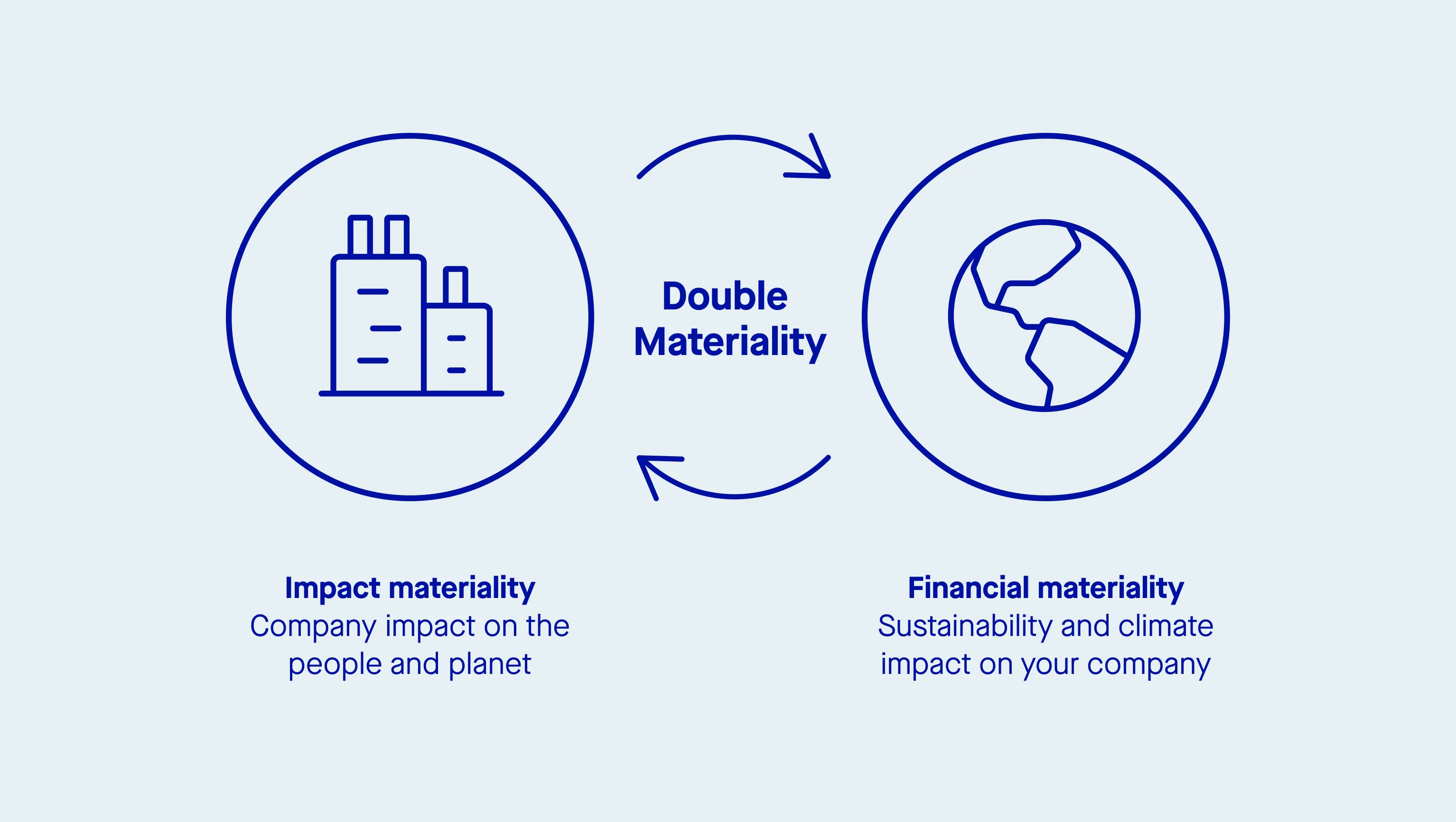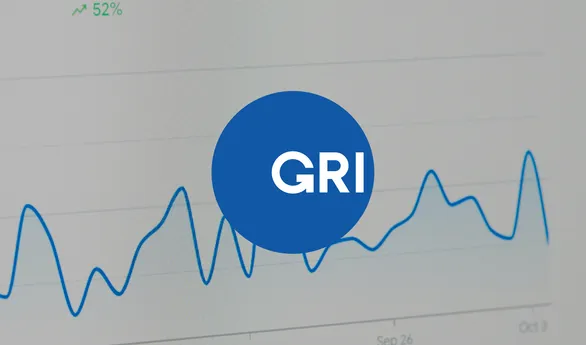As an investment professional, you’re acutely aware that the financial landscape has evolved significantly. Traditional investment analysis alone is no longer sufficient to capture the full spectrum of risks and opportunities influencing your portfolio. The term ESG—Environmental, Social, and Governance—has become central in assessing financial performance. Historically, ESG considerations were often confined to values-based investing, focusing on excluding certain investments based on moral or ethical grounds. However, this narrative has shifted. Today, ESG factors are recognized as crucial to investment performance, making their integration into your analysis essential.
In recent years, ESG investments have expanded to adopt a more comprehensive approach, incorporating these factors across diverse asset classes and investment strategies. Consequently, your role as an investment professional now involves systematically evaluating ESG risks and opportunities, not merely for ethical reasons but due to their material impact on long-term financial performance. This shift has been reinforced by global regulatory advancements, heightened stakeholder expectations, and growing evidence that ESG-conscious investments can yield competitive returns.
Recent sustainability reports, such as the Sweep x Capgemini report from September 2024, illustrate the challenges and opportunities within ESG investing. A prominent issue is data management: 44% of financial services organizations report managing over 10 different emissions sources, with 15% handling over 20 sources, yet 83% still rely on Excel spreadsheets for tracking emissions data. This complexity in ESG data underscores the need for enhanced digital solutions and a more integrated approach to sustainability within the financial sector.
This whitepaper will explore essential aspects of ESG investing, offering practical guidance for navigating these evolving dynamics. We will cover the core components of ESG, its growing importance in investing, the role of materiality in decision-making, the impact of ESG on risk management, and key governance criteria shaping ESG practices today. Additionally, we will provide insights into how digital tools and strategies can bolster your management of ESG risks and opportunities.
Understanding ESG and its components
When addressing ESG, it’s crucial to understand its three key components: Environmental, Social, and Governance.
Environmental factors pertain to a company’s interaction with the environment, including its carbon footprint, energy consumption, waste management, and adherence to climate regulations. These aspects are increasingly critical as governments worldwide enact stricter environmental policies to combat climate change and address negative externalities.
Social factors examine a company’s relationships with employees, customers, suppliers, and the broader community. These issues encompass labor practices, diversity and inclusion, human rights, health and safety standards, and community engagement, reflecting the social aspects that influence corporate social responsibility.
Governance factors involve the structures and practices of corporate governance, such as board diversity, executive compensation, shareholder rights, transparency, and ethical business practices. Poor governance has been linked to corporate scandals that can severely impact both a company’s reputation and financial stability.
As an investment professional, evaluating these components helps identify potential risks and opportunities that traditional financial analysis might overlook. Understanding these factors is crucial for making informed investment decisions that align with both stakeholder expectations and long-term financial performance.
Why ESG matters in today’s investment landscape
The rise of responsible investing
Over the past decade, there has been a notable shift toward responsible investing. This shift is driven by heightened awareness of climate change, social inequalities, and governance issues. Investors, particularly younger generations, increasingly demand that their investments align with their values, prompting companies and asset managers to prioritize corporate social responsibility and ESG factors.
The Sweep x Capgemini report highlights that ESG is now a major focus for financial institutions globally. The survey reveals that 45% of financial services organizations have integrated sustainability reports into their business model. This cultural shift is reflected in the rapid growth of sustainable investment funds, which are attracting record inflows as investors seek portfolios that deliver not just financial returns but also positive environmental and social impacts.
ESG investing methodologies
Negative screening
Negative screening is one of the oldest ESG investment strategies. It involves excluding companies or sectors from a portfolio based on ESG-related criteria. For example, you might avoid investing in companies involved in fossil fuels, tobacco, or arms manufacturing due to their negative environmental or social impacts.
Positive screening
Conversely, positive screening involves selecting companies that perform well on ESG criteria. This approach seeks to identify industry leaders who are committed to sustainability, responsible labor practices, and strong corporate governance.
ESG integration
This approach involves systematically including ESG factors into your traditional investment analysis and decision-making processes. Instead of screening for or against companies based on ESG factors alone, ESG integration allows you to assess these issues alongside financial metrics to build a more complete picture of a company’s risk and potential for long-term growth.
Impact investing
Impact investing goes a step further by targeting investments that intentionally aim to create positive, measurable social and environmental impacts alongside financial returns. This strategy often focuses on sectors like renewable energy, affordable housing, and healthcare.
Materiality in ESG: Defining what matters most
Sector-specific materiality
One of the challenges of ESG investing is determining which issues are most material to the companies you’re evaluating. Materiality is not a one-size-fits-all concept; it varies significantly across sectors.
For example, carbon emissions are highly material for industries like energy, transportation, and manufacturing, where regulatory pressures and climate risks are more pronounced. On the other hand, social factors like data privacy may be more material for technology and financial companies.
The double materiality approach
Regulations such as the SFDR are increasingly emphasizing double materiality, which considers both how sustainability risks impact a company and how a company impacts sustainability issues. This two-way perspective is critical for investment professionals to fully understand the implications of ESG risks and opportunities.
As highlighted in the Sweep x Capgemini survey, 55% of financial organizations have conducted a double materiality assessment, showing the increasing importance of this approach in managing ESG risks and complying with new regulations.

Managing ESG risks: A critical component of modern portfolio management
Environmental risks
One of the most pressing environmental risks for investors today is climate change. The physical risks of climate change—such as extreme weather events—can lead to disruptions in supply chains, asset damage, and increased operational costs. Additionally, the transition to a low-carbon economy presents significant regulatory and market risks for companies that fail to adapt.
Investment professionals must assess how climate risks are integrated into a company’s strategy, particularly in sectors like energy, utilities, and transportation. Understanding a company’s exposure to climate-related risks and their efforts to mitigate these risks is key to protecting your portfolio.
Social risks
Social risks often stem from a company’s labor practices, human rights record, and interactions with the local communities in which it operates. Poor management of these issues can lead to reputational damage, legal challenges, and disruptions in business operations.
For example, companies with poor labor practices may face strikes, high turnover, or negative media attention, all of which can impact their stock prices and long-term viability. By incorporating social factors into your analysis of investment choices, you can avoid investing in companies that are vulnerable to these risks.
Governance risks
Governance risks arise when a company’s internal controls, policies, or ethical standards are insufficient to safeguard against mismanagement, fraud, or non-compliance with laws and regulations. Poor governance can manifest in various ways, such as weak board oversight, lack of accountability, corrupt business practices, or executive compensation misaligned with shareholder interests. These governance failures can significantly harm a company’s reputation, leading to shareholder lawsuits, regulatory fines, or even long-term declines in stock value.
For investment professionals, governance risks are crucial to assess, particularly in relation to executive decision-making, transparency in reporting, and the independence of the board. Companies with strong governance structures, such as well-diversified boards, clear policies on conflicts of interest, and robust anti-corruption measures, are better positioned to manage risks and capitalize on opportunities. Conversely, poor governance can result in misaligned incentives, opaque business practices, and ultimately a loss of investor confidence.
By thoroughly evaluating the governance practices of the companies in your portfolio, you can identify potential red flags and mitigate the risks associated with poor corporate governance. This evaluation includes scrutinizing the transparency of financial disclosures, the independence of board members, and the alignment of executive pay with long-term shareholder value.
Key ESG legislation for financial organizations
Regulatory compliance in the ESG space is non-negotiable for financial organizations. While ESG integration has become central to investment strategies, you must also navigate a dynamic regulatory landscape. Various regulations, directives, and standards now require financial institutions to disclose their various ESG objectives, risks and impacts, all aimed at driving greater transparency, mitigating systemic risks, and accelerating the transition to a sustainable economy.
The Sustainable Finance Disclosure Regulation (SFDR)
The SFDR is one of the most significant pieces of legislation for European financial organizations. It mandates financial market participants to disclose how they integrate ESG factors into their investment decision-making processes. This regulation seeks to combat greenwashing by requiring more detailed disclosures about sustainability risks, policies, and adverse sustainability impacts.
As an investment professional, your organization must meet these disclosure requirements at both the entity and product levels. The disclosures range from qualitative explanations of how sustainability risks are integrated into investment decisions to specific quantitative metrics that illustrate the environmental or social impacts of your investment products. Being SFDR-compliant not only ensures that you avoid legal penalties but also enhances your credibility with ESG-conscious investors.
One key insight from the Sweep x Capgemini survey is that only 55% of financial organizations have conducted the necessary double materiality assessments, as required by SFDR. This highlights a potential gap in compliance and points to an opportunity for you to improve your organization’s standing by prioritizing these assessments.
The Corporate Sustainability Reporting Directive (CSRD)
Another key regulatory development is the CSRD, which aims to overhaul and improve the quality and consistency of sustainability reporting across Europe. The CSRD builds on the Non-Financial Reporting Directive (NFRD), extending its reach to more companies and imposing stricter reporting requirements.
Under the CSRD, companies—including many financial institutions—must report on how their activities impact the environment, society, and governance structures. These annual reports are meant to be audited and will likely influence investor decision-making. As an investment professional, it’s essential that you stay ahead of these requirements by ensuring that your clients or the companies in which you invest are properly disclosing their ESG risks and opportunities.
The EU Taxonomy Regulation
The EU Taxonomy Regulation establishes a classification system to determine whether an economic activity is environmentally sustainable. This regulation is critical for guiding investment decisions and ensuring that capital flows toward genuinely sustainable activities.
The Taxonomy’s primary objective is to prevent greenwashing and to help investors distinguish between truly sustainable investments and those that merely claim to be. For you as an investment professional, the Taxonomy Regulation provides a useful framework for evaluating whether your investments align with sustainability objectives such as climate change mitigation, water preservation, pollution control, and biodiversity protection.
By adhering to the EU Taxonomy, you can provide more transparent reporting to your investors while also contributing to the EU’s goal of achieving carbon neutrality by 2050.
Task Force on Climate-related Financial Disclosures (TCFD)
The Task Force on Climate-related Financial Disclosures (TCFD) provides a global framework for companies and investors to disclose their climate-related risks and opportunities. While not mandatory everywhere, TCFD recommendations have been widely adopted and are increasingly being incorporated into regulatory regimes.
The TCFD focuses on four key areas of disclosure: governance, strategy, risk management, and metrics and targets. By following TCFD guidelines, you ensure that your organization is taking a proactive approach to managing climate risks. This can also enhance your organization’s reputation with stakeholders who are demanding greater accountability in relation to climate impacts.
Other Key Standards: GRI and SASB
In addition to the EU-specific regulations, you should also be aware of other global frameworks such as the Global Reporting Initiative (GRI) and the Sustainability Accounting Standards Board (SASB) standards. These frameworks are designed to improve the consistency and comparability of the ESG standards for reporting across industries.
GRI focuses on sustainability reporting at a global level, providing comprehensive guidelines for reporting on a wide range of ESG topics. SASB, on the other hand, focuses on financial materiality and provides standards that are industry-specific. These standards can help you better assess the ESG risks and opportunities within your portfolio, making your investment decisions more informed and aligned with best practices.
Measuring and managing ESG data
Accurate and reliable ESG data is essential for making informed investment decisions. However, as identified in the Sweep x Capgemini survey, many financial organizations face significant challenges when it comes to measuring and managing their ESG data. Understanding these challenges—and how to address them—is critical for you as an investment professional.
The data dilemma
One of the key findings of the Sweep x Capgemini survey is that 83% of financial organizations are still using Excel spreadsheets to track their emissions data. This reliance on outdated methods can make it difficult to gather comprehensive and accurate data, which in turn hampers the ability to formulate effective sustainability strategies. For example, 44% of organizations have more than 10 different emissions sources, making it even more challenging to consolidate and analyze this data effectively.
This data dilemma presents a significant hurdle for you when trying to assess ESG risks or quantify the environmental impact of your investments. Poor data quality leads to less reliable ESG ratings and scores, which can affect investment decisions and portfolio performance.
Transitioning to dedicated ESG software
To overcome these challenges, financial organizations are increasingly turning to dedicated ESG software solutions that streamline data collection, analysis, and reporting. Using a digital platform can help your organization transition from manual data tracking to more automated and accurate methods, reducing errors and ensuring that your data is comprehensive and reliable.
Digitalization plays an important role in this transformation. According to the survey, 88% of financial services organizations say that digitalization is critical to their sustainability strategy. By leveraging these tools, you can gain a clearer picture of your portfolio’s ESG impact and make more informed investment decisions that align with regulatory requirements and sustainability goals.
ESG and portfolio decarbonization
One of the most pressing challenges in ESG investing is portfolio decarbonization. As an investment professional, you are likely already aware of the growing pressure from regulators, clients, and other stakeholders to reduce your portfolio’s carbon footprint. This requires not only measuring emissions but also taking proactive steps to decarbonize your investments.
Measuring financed emissions
Financed emissions—those indirect emissions from your assets and investments—are a significant concern for financial institutions. These emissions fall under Scope 3 of the Greenhouse Gas (GHG) Protocol and are among the most difficult to measure accurately.
Despite the challenges, you are increasingly expected to report on financed emissions as part of broader ESG and climate-related disclosures. Investors, regulators, and clients are demanding greater transparency on how their investments contribute to climate change. For example, the EU’s SFDR and other regulations require financial institutions to measure and report the emissions associated with their investments.
Tools like the Partnership for Carbon Accounting Financials (PCAF) provide methodologies for financial institutions to measure and disclose their financed emissions. Utilizing such tools will help you accurately assess your portfolio’s carbon footprint and take necessary actions to reduce it over time.
Reducing portfolio emissions
Once you’ve measured your portfolio’s carbon emissions, the next step is to actively reduce them. Decarbonization strategies may include investing in low-carbon technologies, shifting capital away from high-emission sectors, or engaging with companies to improve their environmental performance.
To be effective, your decarbonization efforts should be aligned with recognized frameworks like the Science-Based Targets initiative (SBTi), which helps organizations set credible and science-based emissions reduction targets. Setting clear goals for decarbonization not only mitigates climate risks in your portfolio but also demonstrates your commitment to sustainability—an increasingly important consideration for investors.
The future of ESG investing
Looking ahead, the integration of ESG into investing is expected to continue evolving. As an investment professional, staying ahead of these trends will be key to maintaining a competitive edge. Key areas of focus include the continued advancement of ESG data analytics, the development of new sustainable financial products, and the increasing demand for transparency and accountability in the investment process.
ESG data analytics and AI
The future of ESG investing will likely be shaped by advancements in data analytics and artificial intelligence (AI). These technologies have the potential to enhance your ability to analyze vast amounts of ESG data, identify trends, and make more informed investment decisions. As data becomes more accessible and AI tools more sophisticated, you’ll be able to assess ESG risks and opportunities in real-time, giving you a significant edge in managing your portfolios.
Development of sustainable financial products
Another trend to watch is the proliferation of sustainable financial products. Green bonds, sustainability-linked loans, and other ESG-focused financial instruments are gaining traction as investors seek to align their capital with sustainable development goals. As these products evolve, you’ll have more options to offer your clients who want to invest with a focus on sustainability.
Demand for transparency and accountability
Finally, the demand for greater transparency and accountability will continue to grow. Investors, regulators, and other stakeholders are increasingly calling for clearer ESG reporting and more stringent standards. To meet these expectations, you’ll need to ensure that your investment practices are transparent, that your ESG data is reliable, and that your portfolios align with the growing demand for sustainability.
Conclusion: Navigating the ESG investment landscape
Incorporating ESG into your investment strategy is no longer optional—it’s a necessity. As an investment professional, you’re tasked with managing both the risks and opportunities that arise from ESG considerations. From understanding the regulatory landscape to leveraging new technologies, your ability to integrate ESG into your decision-making process will be critical to your long-term success.




